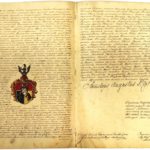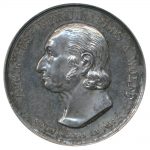Museum of the History of Medicine
Medical University of Warsaw
ul. Żwirki i Wigury 63
02-091 Warsaw
Tel. (22) 116 60 19
muzeum@wum.edu.pl
www.muzeum.wum.edu.pl
Free admission (temporary exhibitions).
Mondays – Fridays: 8 am – 4 pm
Director: Grażyna Jermakowicz, MA
Staff: Monika Klimowska MA, Agata Małkowska MA, Anna Szymańska-Budzińska PhD, Honorata Kielar-Franaszczyk
The Museum of the Medical University of Warsaw was established in 2011. It continues the 19th-century tradition of collecting objects connected with medicine and pharmacy within the walls of the Royal University of Warsaw, the Main School and the Imperial University of Warsaw, and the pre-war collections of teaching materials of the University of Warsaw’s Faculty of Medicine: the Museum of the Department of Normal Anatomy, the Museum of Pathological Anatomy and the Museum of Forensic Science. The Museum of the History of Medicine has its seat in the Library and Information Centre at ul. Żwirki i Wigury 63, in the very centre of the Banacha Campus. The museum is located alongside the Rector’s Offices, the Main Library and the modern high tech Józef Polikarp Brudziński Paediatric Hospital, the Teaching Centre, scientific and clinical departments, many rooms where seminars are held, therefore making the conditions for exhibiting very accessible. The museum collections consist of items of significant historical value which were acquired as gifts, purchases, loans or donations from other entities of the medical university. By the end of 2020 more than 3,500 exhibits had been amassed. These include manuscripts, old books, medical equipment, commemorative medals, archival materials, iconography and documents concerning social life. Among them is a fine collection of bookplates and rare medals associated with medical and pharmaceutical topics. The collections also contain the legacy and memorabilia of Warsaw’s medical community, including those left by professors Witold and Tadeusz Orłowski, Witold Rudowski, Jerzy Modrakowski and Jan Zaorski and his renowed Private Vocational School for Paramedic Personnel (Prywatna Szkoła Zawodowa dla Pomocniczego Personelu Sanitarnego) in Warsaw. The memorabilia include also the historic collection related to the early days of the Faculty of Medicine, the so-called Boremlowski Academy in the Praga district of Warsaw which was reactivated in November 1944. The oldest and most valuable exhibits comprise more than 100 old books, which include: Syntagma Anatomicum by Johann Vesling published in Padua in 1647, Ortus Medicinae by Johann Baptista van Halmont published in Lyon in 1655 and a 17th-century textbook on surgery, Armamentarium Chirurgicum by Johannes Scultetus, which contains 40 copperplate prints. Recently the museum has begun to inventorize ‛wet’ preparations which are reminiscent of the university’s pre-war Museum of Pathological Anatomy. All new acquisitions are inventoried on a current basis in the museum’s MONA system. Since 2011 the museum has been organizing regular temporary exhibitions concerning the history of medicine, as well as other fields of learning, culture and art. These are put on display in the Gallery of Temporary Exhibitions located on the first floor of the Library and Information Centre as well as in other buildings on the Banacha Campus. The more important exhibitions organized in the years 2017–2020 have been: Józef Polikarp Brudziński… Salus aegroti suprema lex esto, ‛Femina et Medicina. Portrait of Hygieia in Warsaw’s Academic Tradition’, ‛1920–2020. One hundred years of teaching internal medicine. Mściwój Semerau-Siemianowski – the father of modern cardiology’ and ‛Between Warsaw and Zakopane. The Legend of Tytus Chałubiński’. In 2021 the opening of the first part of a permanent exhibition is planned. The museum also holds museum meetings, seminars, conferences and themed walks devoted to the history of medicine and its renowned founders which are organized for both the academic community and the inhabitants of Warsaw. Recently the lectures and walking tours prepared as part of two series: ‛The Legacy of Asclepius. Medicine versus Humanities’ and ‛The Coryphaei of Medicine in Warsaw and their teaching schools’ have proved very popular. One of the museum’s main tasks is also to take care of the material legacy of the historic Child Jesus Hospital (the Lindley Campus).

















